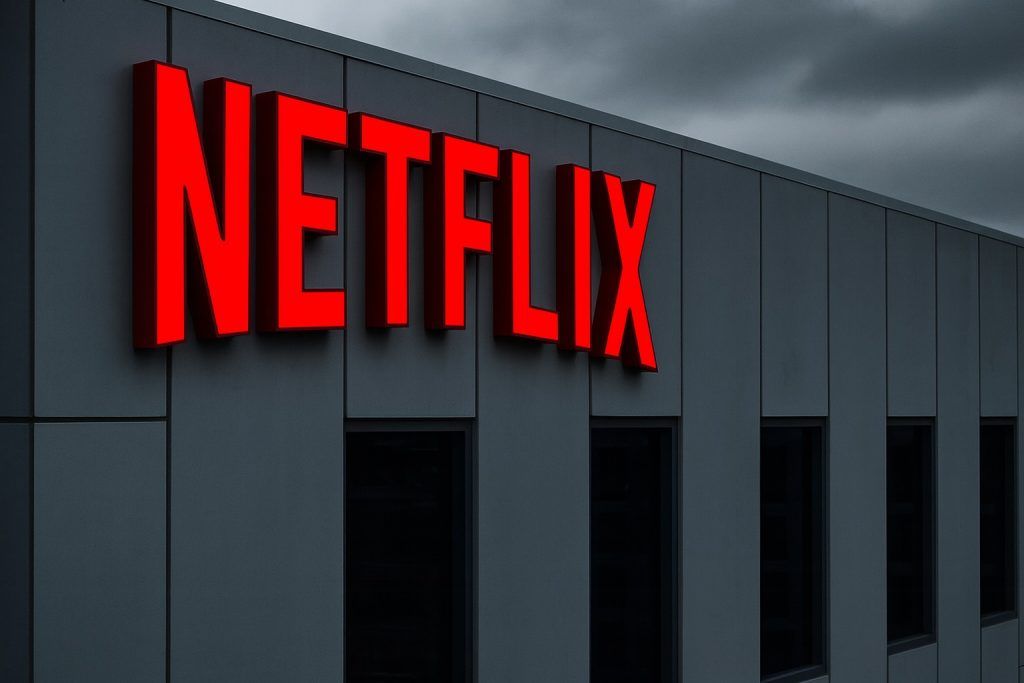Uber Technologies (NYSE: UBER) had a volatile session on Thursday, 20 November 2025, as investors weighed a fresh European legal challenge to the company’s AI‑driven pay systems against upbeat news on automation, travel partnerships and still‑bullish Wall Street views.
By late trade, UBER had fallen sharply in the regular session to the mid‑$80s, down roughly 6–7% on the day, with intraday lows below $86 and lows near $83–84 on some feeds. [1] Heavy trading pushed volume to about 34.5 million shares, one of the busiest days since Uber’s early‑November earnings report. [2] Yet in after‑hours trading, the stock bounced back toward $90, suggesting dip‑buyers are already stepping in. [3]
Below is a detailed look at what moved Uber stock today and what it may mean for investors watching UBER.
Uber stock today: sharp sell‑off, heavy volume, oversold signals
Market data providers show Uber opening near $90 before sliding hard as the session wore on, with prices dipping into the low–mid $80s and finishing roughly 6% lower on the day. [4]
A few key technical points from today’s action:
- Big volume: About 34.5 million UBER shares changed hands, far above typical recent sessions in the mid‑teens of millions and the busiest day since the post‑earnings sell‑off on November 4. [5]
- RSI flashes “oversold”: Nasdaq’s technical commentary noted that UBER’s Relative Strength Index (RSI) dropped to around 28.5 intraday — below the 30 threshold many traders use to define “oversold” territory. At that point, the stock was trading as low as about $85.83, with a last trade near $85.81 and a 52‑week range of roughly $59.33 to $101.99. [6]
- After‑hours rebound: According to Public.com, Uber’s regular‑session close near $83.5 was followed by a strong after‑hours bounce to about $90.14, up nearly 8% from the close. [7]
Despite today’s pullback, Uber remains a strong 2025 winner: Yahoo Finance data show a year‑to‑date total return of about 39% as of 20 November 2025, meaning today’s sell‑off is a hit to what has still been a strong uptrend. [8]
For short‑term traders, that combination of sharp decline, high volume and oversold RSI often signals capitulation rather than the start of a long downtrend. But the trigger for today’s move is not purely technical — it is tightly tied to a new regulatory and legal risk emerging in Europe.
AI‑driven pay systems under fire: the legal challenge spooking investors
The biggest negative catalyst for UBER today is a mounting legal offensive in Europe against the company’s AI‑driven pay and pricing systems.
Letter before action and threatened class action
The non‑profit foundation Worker Info Exchange (WIE) has served Uber with legal demands to halt the use of its AI‑driven “dynamic pay” and “upfront pricing” systems in Europe. [9]
Key elements of the challenge:
- WIE has issued a “letter before action” alleging that Uber’s algorithmic pay model violates European data protection law, including the General Data Protection Regulation (GDPR), by:
- Using drivers’ personal data to set variable pay without proper consent.
- Making automated decisions about driver earnings in ways drivers cannot see or meaningfully challenge. [10]
- The group is preparing an opt‑out collective action to be filed in Amsterdam on behalf of thousands of drivers across the EU, UK and EEA, targeting Uber Technologies and its Dutch subsidiary Uber BV. [11]
- WIE is asking for:
- An injunction forcing Uber to stop using the current AI pay system.
- A return to a more transparent, human‑oversighted pay model.
- Compensation for alleged lost earnings. [12]
Today’s commentary from outlets covering the case underlines why markets paid attention. UK‑focused DM News, for example, stresses that pay‑setting algorithms now effectively decide driver income on a ride‑by‑ride basis, with many drivers unsure how much of each fare actually reaches them. [13]
Why this matters for Uber’s valuation
This is not Uber’s first clash with European courts over automation and data:
- Earlier Dutch court rulings have already found that Uber unlawfully used automated systems to “robo‑fire” drivers and failed to provide adequate algorithmic transparency, leading to fines and back‑pay obligations. [14]
- New research released in mid‑2025 by Oxford University in partnership with WIE argued that dynamic pricing reduced hourly driver earnings while boosting Uber’s share of fares. [15]
If WIE’s new case in Amsterdam proceeds and succeeds, potential consequences include:
- Limits or redesign of Uber’s dynamic pay and pricing algorithms in Europe.
- Higher operational complexity and possibly higher labor costs if more “human in the loop” oversight is required.
- Damages or settlements tied to alleged past under‑payment of drivers. [16]
For a company still priced as a high‑growth, asset‑light platform, the prospect of regulatory constraints on its core algorithms is enough to rattle investors — and that’s clearly reflected in today’s sell‑off.
Starship robot delivery deal: automation upside in the spotlight
Balancing the legal headwinds, Uber also delivered headline‑grabbing strategic news today: a major expansion of its autonomous delivery ambitions.
Reuters reported that Uber will partner with Starship Technologies to launch autonomous sidewalk robot deliveries in the UK starting in December, initially focused on Uber Eats customers in parts of Leeds and Sheffield. The partnership plans expansion to additional European markets next year and to the U.S. from 2027. [17]
Some key details:
- Starship’s delivery robots will operate at Level 4 autonomy, meaning they can run without human intervention within designated areas. [18]
- The tie‑up adds to Uber’s growing list of automation partnerships, which already includes Serve Robotics and Avride for robotic food delivery in the U.S. [19]
- Starship robots have already completed millions of delivery trips globally, which should shorten Uber’s learning curve as it scales sidewalk delivery. [20]
For investors focused on the long term, this deal reinforces Uber’s strategic push to automate “last‑mile” logistics, potentially trimming labor costs and expanding the range of orders that can be delivered profitably.
However, the irony won’t be lost on regulators: on the same day that a new class action takes aim at Uber’s AI and automation in driver pay, the company is touting further automation in its delivery network.
Delta–Uber tie‑up: building a travel and loyalty ecosystem
Beyond robots and lawsuits, Uber also featured in travel industry news today.
Delta Air Lines announced that it is deepening its partnership with Uber, rolling out:
- A new Express Drop Off pilot at New York’s LaGuardia Airport (LGA), where passengers who have already checked in can choose a special drop‑off zone with curbside hospitality, wayfinding support and a direct path to security. [21]
- Expanded SkyMiles–Uber account linking, allowing Delta SkyMiles members to earn:
- 3 miles per eligible dollar on Uber Reserve trips,
- 2 miles per dollar on premium rides like Uber Comfort and Uber Black,
- 1 mile per dollar on standard UberX airport rides,
- and miles on qualifying Uber Eats orders. [22]
Delta says more than 1.4 million SkyMiles members have already linked their Uber accounts, underlining how central ride‑hailing has become to the airport and business‑travel experience. [23]
For Uber shareholders, this partnership:
- Deepens lock‑in with high‑value frequent flyers.
- Increases ride frequency around airports, where basket sizes and margins can be higher.
- Bolsters Uber’s positioning as part of a broader mobility and travel ecosystem, not just a standalone ride‑hailing app.
It’s incremental rather than transformative news, but it supports the bull case that Uber can layer loyalty and cross‑selling on top of its existing trips and delivery volume.
Wall Street remains broadly bullish: earnings beats and higher targets
Despite today’s volatility, analyst sentiment toward Uber remains positive.
Strong Q3 backdrop
In early November, Uber reported third‑quarter 2025 results that beat expectations on both revenue and earnings:
- MarketBeat’s summary notes Q3 EPS of about $3.11 vs. consensus around $0.67, on revenue of roughly $13.47 billion, up about 20% year on year. [24]
- The Financial Times and others highlighted that net profit was dented by a $479 million legal charge, but underlying growth in trips, gross bookings and free cash flow remained strong. [25]
Even with that legal charge, several research houses reiterated or raised their price targets after the print:
- A fresh note on Seeking Alpha published today flagged Uber’s partnership with Nvidia in autonomous vehicles, upgrading the rating and hiking the price target to $127, emphasizing record cash flow and AV catalysts. [26]
- MarketBeat’s aggregation of analyst views shows a “Moderate Buy” consensus with an average target price around $108, well above today’s mid‑$80s trading levels. [27]
Institutional interest still building
A series of SEC 13F‑filing‑based notes today also point to institutional accumulation of UBER shares:
- Prudential PLC increased its stake by about 15.7% in Q2, buying roughly 29,359 additional shares to bring its holding to about 216,855 shares (around $20.2 million at the time of filing). [28]
- Accordant Advisory Group Inc boosted its position dramatically (over 59,000%), now holding about 15,500 UBER shares. [29]
- 17 Capital Partners LLC grew its stake by more than 350%, making Uber one of its top 10 holdings. [30]
Combined with earlier bullish notes — such as analysts calling Uber a “must‑own” with price targets around $110 — the message from Wall Street remains that today’s legal risk and volatility are bumps in an otherwise attractive growth story, not a thesis‑killer. [31]
How traders and investors may read today’s move
Nothing in markets is ever guaranteed, but the ingredients on 20 November 2025 look like this:
- Fundamentals:
- Strong revenue and earnings growth.
- Robust free cash flow.
- Expanding partnerships (Nvidia, Starship, Delta) that deepen Uber’s competitive moat. [32]
- Risks:
- Price action & technicals:
- One of the sharpest down days since April, with the stock down roughly 6–7% intraday and on course for its lowest close since June before the late rebound. [35]
- RSI dipping below 30 (oversold), often interpreted as a sign of short‑term capitulation rather than the start of a long bear trend — but not a guarantee of a bounce. [36]
Given that backdrop, some short‑term traders may see today’s flush and oversold reading as a tactical buying opportunity, especially for those who believe the legal case will result in fines and system tweaks rather than a fundamental rewrite of Uber’s business. Others, particularly long‑term, risk‑averse investors, may prefer to wait for more clarity from European courts and regulators before adding exposure.
What to watch next
For anyone following Uber stock after 20 November 2025, the key storylines to monitor are:
- Progress of the Amsterdam legal challenge
– Will WIE file its promised collective action under Dutch law, and will courts grant any early injunctions limiting Uber’s AI‑driven pay systems? [37] - Regulatory signals from EU and national data‑protection authorities
– Authorities have already scrutinized Uber’s automated decision‑making in past cases; fresh investigations or guidance could influence the company’s risk profile. [38] - Execution of the Starship robot delivery rollout
– Investor enthusiasm will depend on whether Uber can scale autonomous deliveries beyond a PR‑friendly pilot and translate them into margin expansion over time. [39] - Customer and driver reaction
– If drivers see the legal challenge as a turning point and coordinate more demands for transparency and higher pay, Uber could face additional pressure on take rates and incentives. - Broader tech and AI sentiment
– Today’s move also occurred against a backdrop of renewed volatility in technology stocks as investors reassess AI‑related valuations. [40]
Uber stock on 20 November 2025 encapsulates the company’s reality: high growth, powerful network effects and ambitious automation plans — offset by equally high legal and regulatory scrutiny. Whether today’s sell‑off proves to be a buying opportunity or an early warning sign will depend largely on how the AI pay lawsuit unfolds and how convincingly Uber can show that its algorithms are not just profitable, but fair and compliant.
This article is for information and education only and does not constitute financial advice or a recommendation to buy or sell any security. Always do your own research or consult a licensed financial adviser before making investment decisions.
References
1. www.investing.com, 2. www.investing.com, 3. public.com, 4. www.investing.com, 5. www.investing.com, 6. www.nasdaq.com, 7. public.com, 8. uk.finance.yahoo.com, 9. www.theguardian.com, 10. www.theguardian.com, 11. www.cdr-news.com, 12. completeaitraining.com, 13. dmnews.co.uk, 14. apps.eurofound.europa.eu, 15. www.workerinfoexchange.org, 16. completeaitraining.com, 17. www.reuters.com, 18. www.reuters.com, 19. www.reuters.com, 20. www.stocktitan.net, 21. news.delta.com, 22. news.delta.com, 23. news.delta.com, 24. www.marketbeat.com, 25. www.morningstar.com, 26. seekingalpha.com, 27. www.marketbeat.com, 28. www.marketbeat.com, 29. www.marketbeat.com, 30. www.marketbeat.com, 31. www.cantechletter.com, 32. seekingalpha.com, 33. www.cdr-news.com, 34. nltimes.nl, 35. www.morningstar.com, 36. www.nasdaq.com, 37. www.cdr-news.com, 38. apps.eurofound.europa.eu, 39. www.reuters.com, 40. www.reuters.com







